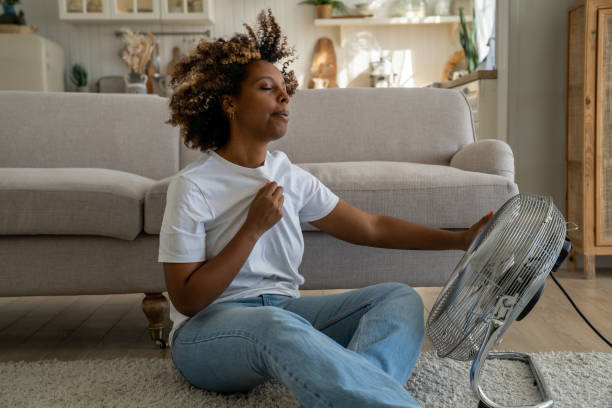
Let’s be honest, when menopause hits, things can get weird. But among all its physical and psychological challenges, perhaps the most persistent and famous are the ‘hot flashes.’ While you’re probably all too familiar with the sudden and unexpected nature of these symptoms, what’s really causing them?
Let’s break down the four types and the science behind them. That way, you’ll feel empowered in knowing what you’re dealing with, and how to deal with ’em!
1. Mild
The most common form of hot flashes, these are usually pretty obvious. You feel warm outta nowhere, usually in your chest, neck and face, and then the fun begins. Sometimes, they last a few seconds, sometimes minutes and more.
While mild hot flashes are usually easily managed, they don’t just happen for no reason. See, during menopause, your estrogen levels fluctuate. As this happens, a part of your brain known as the hypothalamus – which is like your brain’s thermostat – becomes super sensitive. As a result, your body struggles with cooling and may overreact, triggering sweat and dilated blood vessels even if not needed.
To deal with this, simply be mindful of clothing layers. A portable fan is a must and drinking plenty of fluids will usually suffice!
2. Moderate
More intense than their mild counterpart, these hot flashes often last no fewer than 10 minutes. The sweating can get pretty gross and you’ll often look flushed. You may even notice that your heart rate gets jacked. If moderate hot flashes hit several times per day, they can become a daily disruptor.
Caused by the same scientific reasons as mild hot flashes, moderate hot flashes are characterized by greater miscommunication between your body and brain. In Black women with diabetes, the intensity is even higher.
One way to combat this is by regularly exercising as that can help teach your body to regulate its temperature more appropriately. Many women also find mindfulness through yoga, meditation, and breathing exercises to be very helpful in regulating the severity and duration of hot flashes.
RELATED: 5 All-Natural Solutions For Relieving Hot Flashes
3. Severe
Sometimes, hot flashes can be debilitating. This happens when they come on so suddenly and intensely, that you have to stop what you’re doing. With this level of hot flash, most women will experience heavy sweating, chills, and something the other levels lack, which is a rush of anxiousness or even a panic attack.
Lasting as long as half an hour, a severe hot flash can be quite unsettling and can occur at any time during the day or evening. Triggered by drastic decreases in your estrogen level, severe hot flashes usually mean that your hypothalamus is going into overdrive. Obesity and high blood pressure can worsen these episodes.
Unfortunately, lifestyle changes alone are often not going to cut it. While they can help reduce the severity and duration, many women who routinely experience severe hot flashes may need Hormone Replacement Therapy (HRT). This therapy can get your estrogen levels back to normal, which will make a world of difference in your symptoms!
4. Night Sweats
Night sweats are just hot flashes that happen when you’re sleeping (or trying to).
In some cases, the sweat comes on so strong that you may feel like your entire bed is submerged in sweat. It’s not a fun feeling, and the issues it causes in your sleep can cause problems throughout the day. If night sweats persist, they can dramatically affect your mood and well-being during the day due to sleep deprivation.
Because your body naturally decreases its temperature when sleeping, your brain may misinterpret this and go into hyper mode, thinking your body is cooling in an attempt to treat overheating. As a result, your body is triggered to produce large amounts of sweat to cool you off.
Your best way to address this is through the ideal environment. Keep your room cool and always enjoy fabrics that breathe and are not heavy or cumbersome. Using a fan at night is often helpful and may prevent night sweats from being triggered.
And finally, mind what you eat. Certain foods, especially alcohol, caffeine, and spicy stuff can be a problem. If you can’t resist them, just be sure not to eat them too close to bedtime. Gotta resist those late-night snacks!
Overall, if you can understand the science behind why your body is doing all this sweating and ‘flashing,’ you can begin to address the problem. The main thing to know is the sensitivity of your body’s temperature controls to the environment.
By modifying your environment and changing certain daily habits, you can make a major difference in the severity and duration of those annoying hot flashes!









